Hello and welcome to ‘Focused on Feld’. In my Focused on Feld series of reviews, I am working my way through Stefan Feld’s entire catalogue. Over the years, I have hunted down and collected every title he has ever put out. Needless to say, I’m a fan of his work. I’m such a fan, in fact, that when I noticed there were no active Stefan Feld fan groups on Facebook, I created one of my own.
Today we’re going to talk about 2016’s Jórvík, his 23rd game.
2016 was a popular year for games about Vikings: A Feast For Odin, In the Name of Odin, Odin Quest, Odin’s Ravens second edition, Vikings on Board, and Vikings: the Board Game (based on the TV show) are all just a few examples of games that were released that year that revolved around the theme. So it’s no big surprise that when Stefan Feld decided to retheme a previous game of his, The Speicherstadt (his 11th game), that he dressed it up in full Viking regalia. Interestingly enough, until pairing up with Queen Games for their City Collection in mid-2020, Jórvík stood out uniquely as Stefan Feld’s only game to ever receive the re-theme treatment.
Overview
In Jórvík, the players are Viking chieftains trying to build their wealth and influence in the titular city and its surrounding kingdom, better known today as the City of York. The game takes place over the course of 4 seasons. During each season some cards will be drawn from a deck and the players will take turns bidding on the cards using the game’s unique bidding system. If a player is interested in a card, they place one of their pawns in front of it in a single file line. If someone else’s pawn is already there, their pawn is placed behind it. When it comes time to purchase the card, the player in the front of the line must either pay an amount of coins equal to the number of pawns in the line or remove their pawn. Then the next person in line has a chance to purchase the card. Each pawn removed makes the card cheaper.
If a card is won, it is added to the player’s tableau where it will then provide some sort of benefit, whether it be straightforward end-of-game victory points (VP) or ongoing abilities such as the ability to trade one type of resource for another. Over the course of the game, the Picts will attack multiple times and the players will need to fend them off. Some of the cards the players might win will give them the strength to do so. After the Picts’ final attack at the end of the 4th season, the players will tally up their points and the player with the most will win the game.
Now, this is a high level overview of Jórvík. If you’re interested in learning how to play the game, then continue reading. Otherwise feel free to skip ahead to the Thoughts section.
Setup
Before you begin playing Jórvík for the first time, the players should decide which game mode they wish to play – the Karl mode or the Jarl mode. There’s not much difference between the two, honestly, and there’s no real reason to ever play anything besides Jarl mode. For the most part Jarl mode plays exactly like Karl mode with the addition of a new row of cards to draft from that are drafted slightly differently, some extra cards, and some new resource types. If playing with Jarl mode, the entire board will be used. If only playing the Karl mode, the board is folded in half and only the lower portion is used. I’ll point out the gameplay differences in the following sections as we encounter them. For the sake of brevity, though, I’m going to assume you’re playing the Jarl mode during these setup instructions.
Once you’ve selected your play mode and unfolded the board accordingly, it’s time to get the cards in order. There are 4 Pict cards that increase in level of difficulty. There is also 1 deck of cards for each of the 4 seasons. Each of these season decks should be shuffled separately and then placed together, face down, to form a single deck as follows (from top to bottom): winter deck, spring deck, summer deck, autumn deck, highest value Picts card. The other Picts cards will have been shuffled into their appropriate season decks. Once this deck has been created, it is placed onto its board location. Then cards are drawn from the deck and placed face up into their board locations in numerical order. The total number of face up cards used is determined by player count.

Next each player chooses a color and receives the player board, Vikings, and score marker of their chosen color along with 5 coins each. The remaining coins are set aside along with the 2 brown Viking pawns. The resource cubes are added to the drawstring bag which is also set aside. Each player’s score marker begins on the number 10. After this, a start player is chosen and receives the Mjolnir (read: start player) token and you are ready to begin.
Phase One – Supply
In the Supply phase, the starting player will be drawing cards from the deck and placing them onto the board in the numbered spots in numerical order. Spaces not used at the current player count are skipped over. If a Ship card should be added to the tableau, then a number of resource cubes equal to the number printed on the card are drawn randomly from the bag and placed onto the card.

The first Supply phase will have been carried out during game setup. Subsequent Supply phases may see a Pict card get flipped up. When this happens, the game is paused and the Picts are dealt with (which we’ll cover later), the Pict card is discarded, and the rest of the cards are placed.
Phase Two – Demand
In the Demand phase, players will take turns placing one of their Vikings into the column beneath each card in the bottom row or onto a card in the top row.
When adding Vikings to the columns beneath the bottom row cards, the players will place their worker into the empty spot closest to the card.
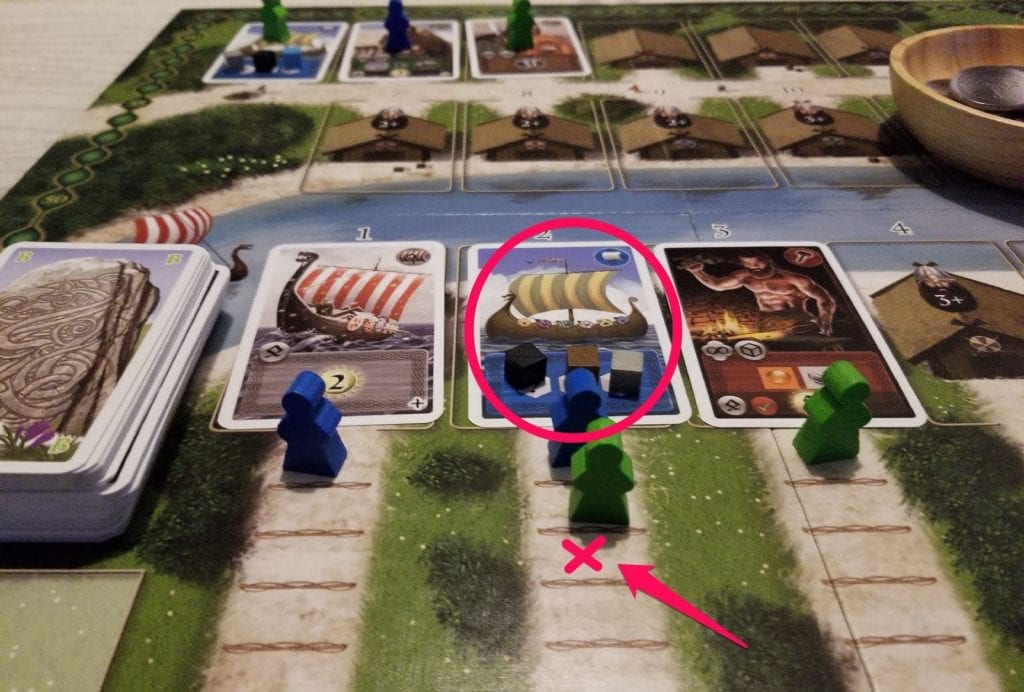
When placing their Vikings onto a top row card, that card is removed from the lineup and placed in the row above it in the leftmost empty spot. In this way, instead of competing for cards, players are reserving them.
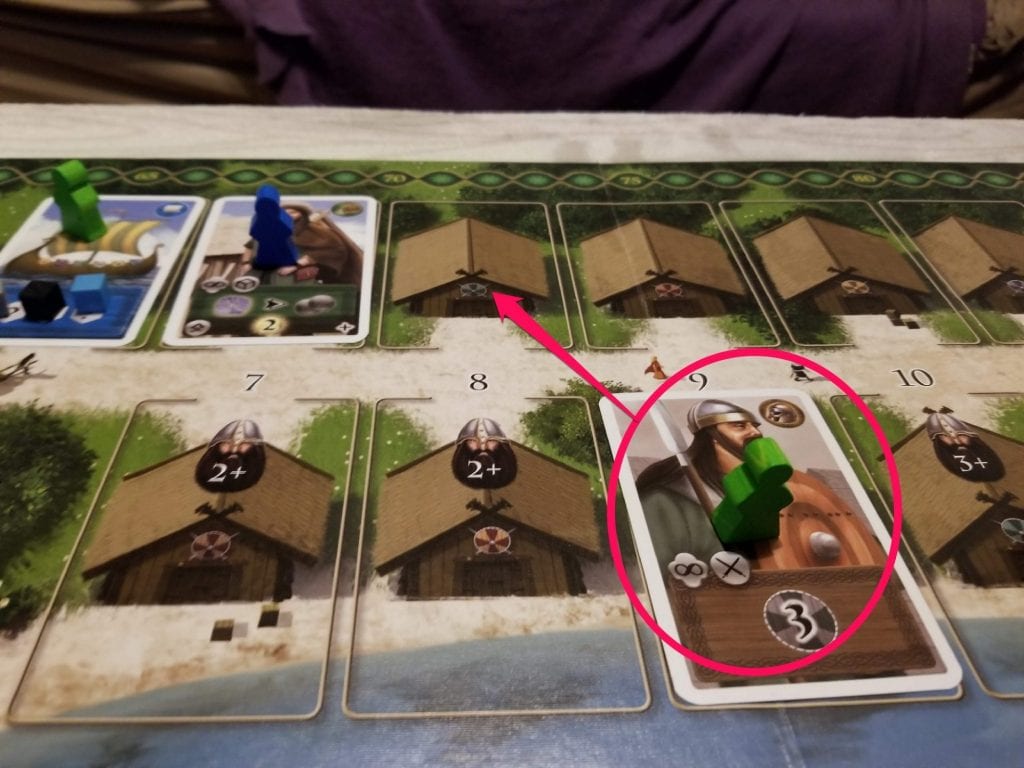
Phase Three – Buying
Beginning with the card in Slot #1 and moving in ascending order, each card is considered for purchase. The player whose Viking is closest to the bottom row card will have the opportunity to purchase it for an amount of coin equal to the number of Vikings that are in the same column beneath the card. If that player opts to not buy the card, their Viking is removed and the next person in line will have an opportunity to purchase the card, even if it’s the same player.

The purchase of top row cards is handled mostly the same with a few slight differences. The player whose Viking is on the leftmost card will have the opportunity to purchase the card for an amount of coins equal to the total number of cards in that row. If they cannot or do not want to pay for the card, then that card is discarded and the next person in line will have the opportunity to purchase their card, even if it is the same player.

Whenever a player purchases a card, it is added to the loading area above their player board. Unpurchased cards are simply discarded. And you’re never forced to purchase a card. In fact, there may be some rounds where you’re simply unable to do so even if you wanted to.
Phase Four – Loading
At the beginning of the Loading phase, each player automatically receives an income of 1 coin unless they did not receive any cards during the Buying phase. If that’s the case, they receive 2 coin instead. Then the cards from the loading area are moved into the personal area beneath the player board with one exception: Ship cards.
Before a player can move a Ship card into their personal area, they must distribute the goods cubes first. Cubes can be distributed to various cards that may require them, traded in at a 3:1 ratio for a cube type of their choice or traded at a 2:1 rate for a single coin. Players are also able to store a single cube in the storage area of their player board. Unused cubes from the Ship card are returned to the bag and the Ship card is then moved to the player’s personal area.
After this, Mjolnir is passed to the next person and a new round begins.
Those Pesky Picts
Whenever a Picts card is revealed during the Supply phase, the game is paused momentarily to allow the players to fend off the attack.
Players will tally up the defense points of all of the Warrior cards they may have purchased. The player with the highest defense will earn the points at the bottom right of the Picts card. The player with the lowest defense will lose the number of points in the lower left corner. Then the Picts card is discarded and the Supply phase continues from where it left off.
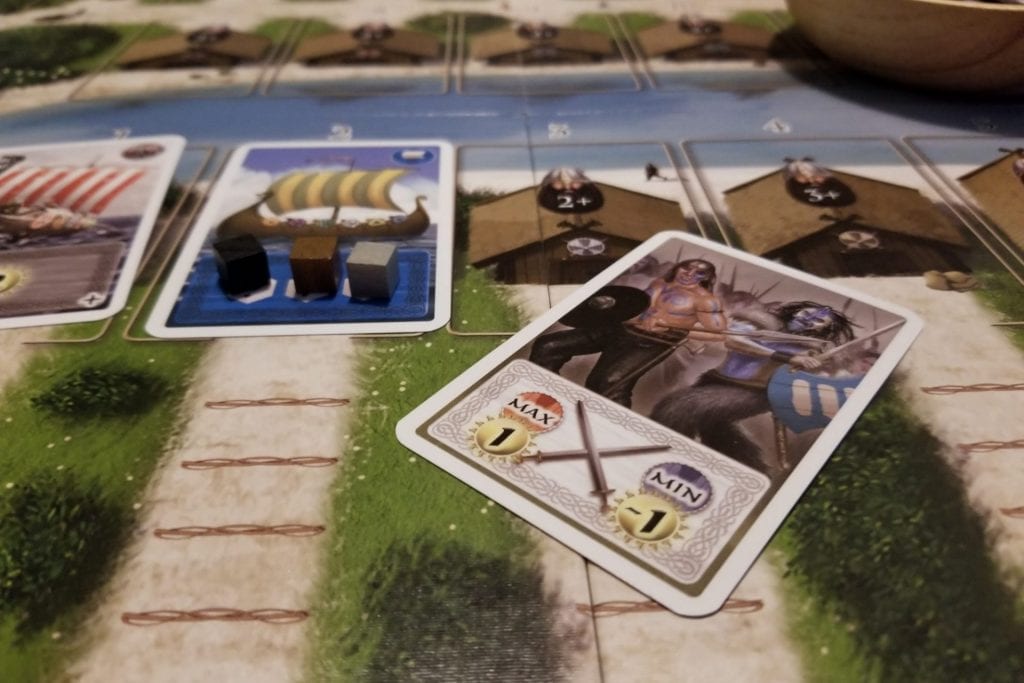
It is worth noting here that there are many different card types that the players will be able to purchase. Some of these will allow the players to perform special actions during specific phases such as trading 1 type of good for VP during the Loading phase or doubling the strength of one of their defenders when the Picts attack.
End Game and Scoring
The game ends when the final Picts card is the only card left in the draw deck at the beginning of a Supply phase. This final Pict attack is resolved as usual and then the players add up the points from their collected cards. The player who has the most wins.
The Speicherstadt
Before I delve into my closing thoughts, I wanted to tip my hat to The Speicherstadt, the game which, along with its expansion, was reimplemented and rethemed to create Jórvík. Aside from the themes (shipping and trading at a modern day sea port versus Vikings), the two games are functionally the same. The Speicherstadt without its expansion is the same game as Jórvík in its Karl mode. When you’re playing in Jarl mode, you’re getting the full experience of The Speicherstadt with its expansion.
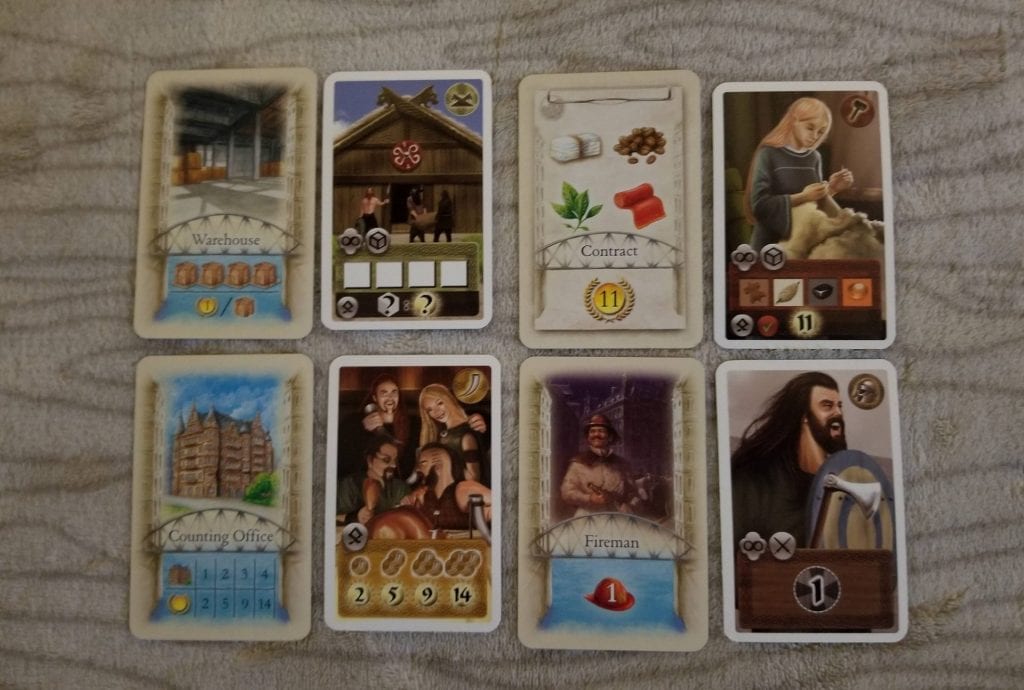
Most of the cards from The Speicherstadt have been recreated exactly in Jórvík. A few that you may have encountered in the The Speicherstadt base game have been moved to Jórvík’s Jarl mode and a few from The Speicherstadt’s expansion have been moved to Jórvík’s Karl mode. Other than those changes and a slight tweak to the values of a couple of other cards, the two games are exactly the same.
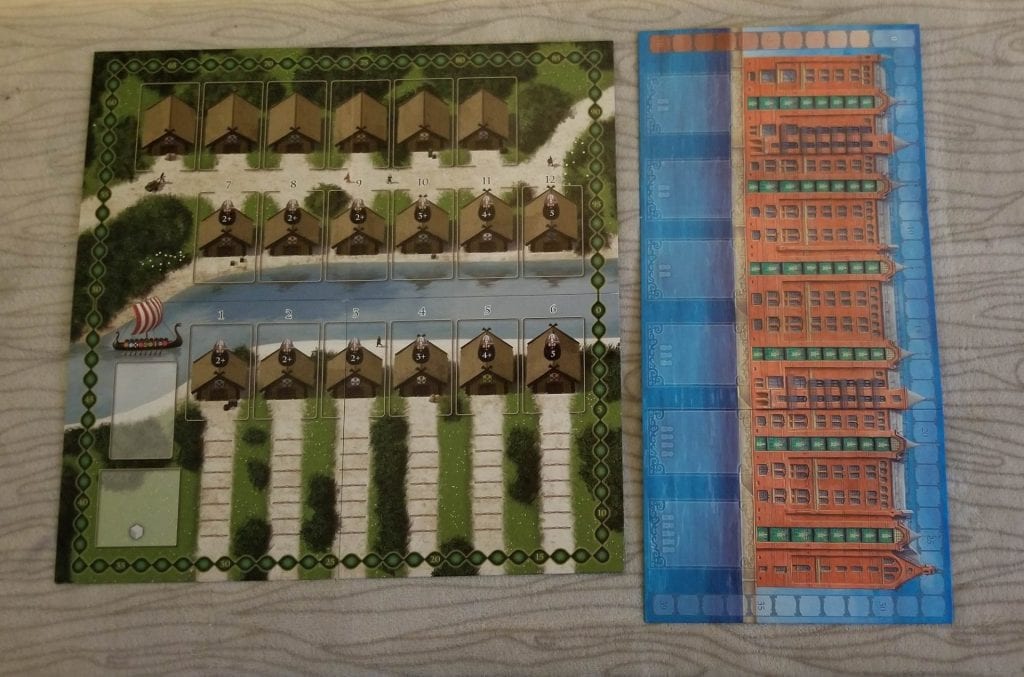
Since the two games are identical in their mechanics, I am not going to be writing a separate review for The Speicherstadt. My thoughts about one are pretty much exactly the same about the other with one caveat: if you already own The Speicherstadt, but not the expansion, it’s probably a lot more cost effective at this point to pick up a copy of Jórvík. If you already own both The Speicherstadt and its expansion, don’t bother with Jórvík (unless you’re a completionist like me). If you own neither game, then I recommend Jórvík. That is unless one theme speaks more to you than another. If that’s the case, then have at it. Just be forewarned, the Kaispecher expansion for The Speicherstadt is long out-of-print and demands a very high price as a result.
Thoughts
I was enamoured with The Speicherstadt from the first moment that I ever played it. At the time it was one of the most unique bidding systems I had ever seen. Games like Power Grid or Keyflower feature very strong bidding systems, but they are of the “up your ante” style of bidding wherein you offer to pay more for something than your opponents and then they respond (or don’t) in kind until the price becomes uncomfortable for all but the last player standing who then pays whatever their final amount was and takes the bid upon item into their control. What The Speicherstadt did differently was that while you are driving up the price for other people, you were simultaneously driving the price down for yourself. This presents a lot of dilemmas that are not easily solvable.
Should you focus most of your efforts on a single card that you really want or diversify to try to collect as many cards as possible just in case they become more useful later? If another player has shown interest in a specific card, should you expend a few of your workers to try to make the card unaffordable for them? Are they trying to fake you out so that they can swoop in after your attempt to foil them and claim the card that they actually want? If you focus on diversifying, are you going to have the capital needed to purchase the cards you’ve selected should you win them? It is this card bidding aspect that is the true heart of the game.
This is a review of Jórvík, though, so this is the last that I will speak of The Speicherstadt other than to say that I have never played a physical copy of the Kaispeicher expansion, but have only experienced it in its digital format on Yucata. Also, you may disagree with me here, but I love The Speicherstadt’s artwork. While some may find the theme bland and boring, I quite enjoy it. It all makes sense. All of the pieces fit together. Some of you may prefer Vikings, though, and I can tell you that you’ll get the same gameplay satisfaction from Jórvík as you’d get from its predecessor. And you’ll get that satisfaction at a fraction of the cost of hunting down its predecessor and its expansion.
The game does contain a bit of randomness, though, and this might not sit well with some. For instance, there are times when you’ll be praying a certain card will come out and when it doesn’t you spend all of your money going for something else only to have the card pop up almost immediately when you no longer have the coin to purchase it. It’s also worth noting that there’s a lot of speculation in the game, especially in the Winter. Artisan and Ship cards do not begin appearing until the Spring, so all of your decisions made during the Winter are a leap of faith in the hopes that your particular collection of cards will work well with whatever comes up in the future. This randomness and speculation, though, can be overcome by thoughtful preparation and knowledge of the cards drawn from multiple plays. The card decks never change, so you’re going to see all of the same cards in each season, just not necessarily in the same order. If there’s a particular card you’re hoping for and it hasn’t shown up yet, it will, and it would behoove you to save up for it to ensure you’ll be able to snag it when it does regardless of price.
In closing, Jórvík and its predecessor are both awesome games. Both games sit around 9 and 10 of my Top 10 Feld games with Jórvík just barely edging out its predecessor and that is mostly because I don’t own the expansion for the other game. Even if I did, Jórvík would still probably edge it out slightly simply because of the theme. While “shipping and trading at a modern day sea port” is a theme that doesn’t particularly bother me, I’ve gotta admit that I think that managing a bunch of Vikings just feels a lot cooler.


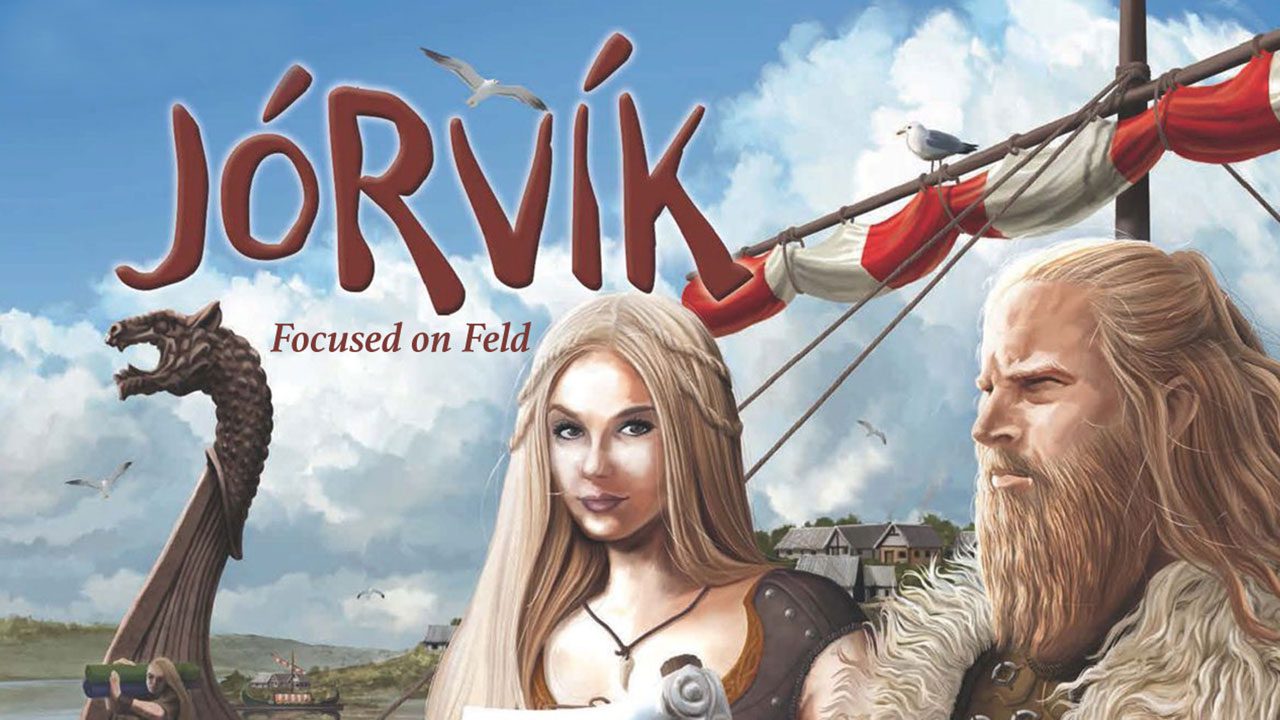

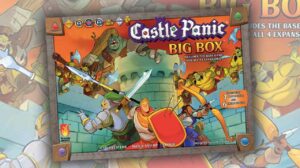

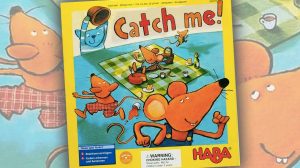





Add Comment